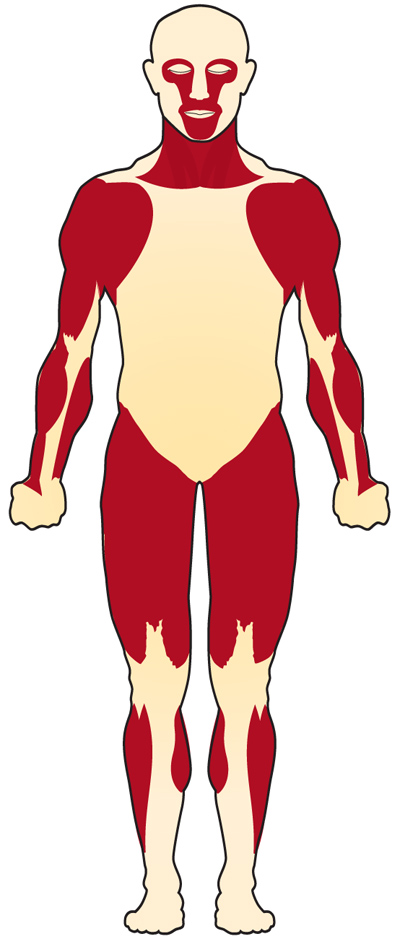Lambert-Eaton Myasthenic Syndrome (LEMS)
Lambert-Eaton Myasthenic Syndrome (LEMS)
 What is Lambert-Eaton myasthenic syndrome (LEMS)?
What is Lambert-Eaton myasthenic syndrome (LEMS)?
Lambert-Eaton myasthenic syndrome (LEMS) is an autoimmune disease — a disease in which the immune system attacks the body's own tissues. The attack occurs at the connection between nerve and muscle (the neuromuscular junction) and interferes with the ability of nerve cells to send signals to muscle cells.
Specifically, the immune system attacks the calcium channels on nerve endings that are required to trigger the release of chemicals (acetylcholine). With fewer calcium channels, the nerve ending releases less acetylcholine. Acetylcholine is a chemical messenger that triggers muscle contraction. In people with LEMS, the lowered levels of acetylcholine are not sufficient to cause normal muscle contractions, causing muscle weakness.
The disease is named for Edward Lambert and Lee Eaton, neurologists at the Mayo Clinic in Rochester, Minn., who first described myasthenic syndrome in the 1950s and '60s.
What are the symptoms of LEMS?
Initially, LEMS can cause weakness in the upper legs and hips, leading to difficulty walking, and weakness in the upper arms and shoulders, which can make self-care difficult. Like myasthenia gravis (MG), it also can result in weakness of the eye muscles and those involved in talking, swallowing, and chewing, but these symptoms are usually mild.
In addition, most people with LEMS also have autonomic (involuntary) nervous system dysfunction (dry mouth is the most common symptom), although this aspect of the disease is usually not very debilitating. For more, see Signs and Symptoms.
What causes LEMS?
In about 50 to 60 percent of cases, LEMS is associated with an underlying disease, particularly small cell lung cancer. It is thought that the body's attempt to fight the cancer inadvertently causes it to attack nerve endings because cancer cells share some of the same proteins as nerve endings.
In the other 40 to 50 percent of cases, the cause is unknown. For more, see Causes/Inheritance.
What is the progression of LEMS?
There are two forms of LEMS, each with different average age of onset and cause but with the same underlying change in the body that leads to the disease.
One form is associated with small cell lung cancer (most often caused by long-term cigarette smoking). It has an older age of onset (averaging 60 years) and is caused by an accidental attack of the nerve terminal by the immune system as it attempts to fight the cancer. In this form of LEMS, successful treatment of the cancer removes the trigger for LEMS and may result in recovery from LEMS.
The second form of LEMS is not associated with cancer. It may have a genetic component linked to autoimmunity and it has a younger age of onset (on average, 35 years).
In both forms of LEMS, the disease is caused by the immune system making antibodies against calcium channels on nerve endings, leading to a loss of some of these channels, which results in muscle weakness. LEMS symptoms can usually be well-managed, or at least partially managed, by a clinician.
What is the status of research on LEMS?
In November 2018, the US Food and Drug Administration (FDA) approved Catalyst Pharmaceuticals’ Firdapse for the treatment of LEMS. Firdapse is also available in Europe.
In addition, MDA-supported scientists in countries around the world are working to reveal numerous facets of LEMS, from identifying possible causes and triggers to the disease's molecular underpinnings to specific treatment strategies.
